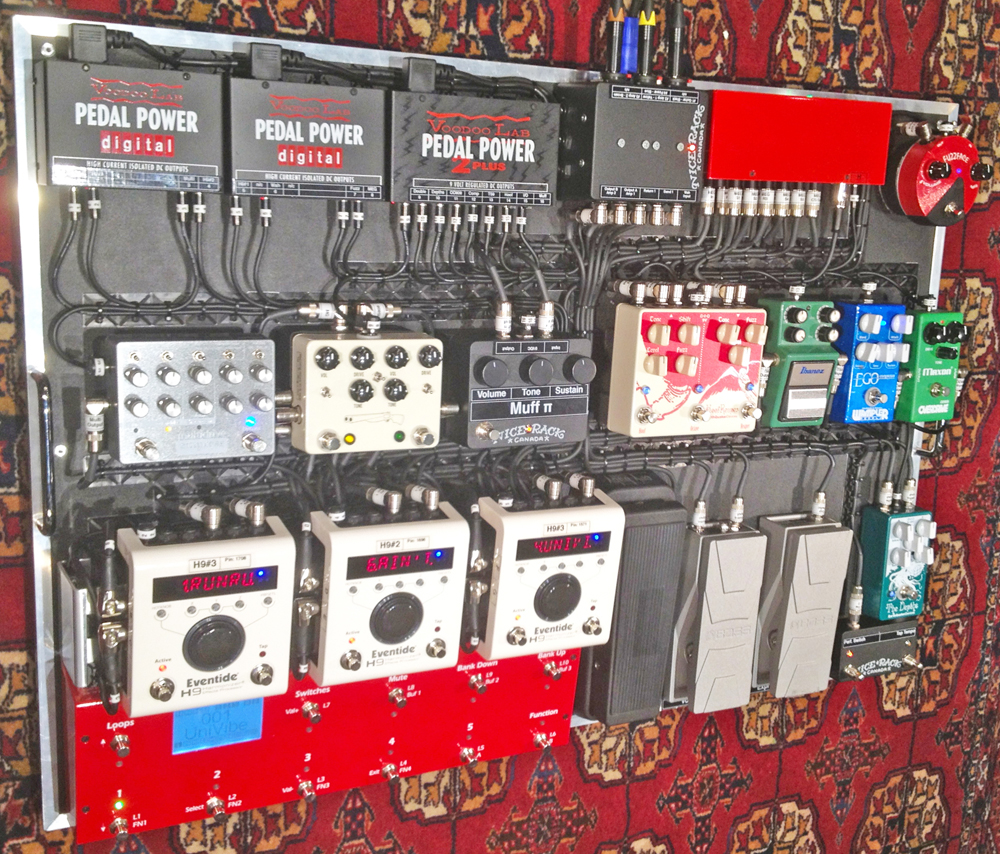
I love these reader pedalboards: I hope you feature my board! I’m in a psychedelic punk-blues duo called Phantom Ocean, based out of New England. This is under the board and does the job. I do have a couple of amps in my home studio that don’t have reverb, so I use this with those. My main amps are a 1975 Princeton Reverb and a 1978 Vibrolux Reverb, so I usually like the amp reverb. I use it for a slapback sound and it’s almost always on. It lets me mimic an organ pad and is kind of fun. Sometimes I’ll use it with the Greer and then fade it in and out with the volume pedal. I don’t use it a ton but sometimes it’s the perfect thing to add color. I literally call this the “Waylon Button.”

Again, it retains the clarity at higher gain but still sounds like an amp. I like this behind the Nobels and use it to get a “singing,” higher-gain lead tone. With a single-coil guitar, I use it for my clean sound and it’s always on. This is my favorite pedal and the heart of the board.

With a humbucker guitar, I usually shut the Nobels off and use it by itself. Typically, I use it for a raunchy rhythm sound.

With a single-coil guitar, I use it to push the Nobels ODR-Mini and get a little more gain without losing clarity. I use it to quiet the rig when I play with acoustic instruments and am also trying to get the hang of pedal-steel bends.
PEDAL BOARD SPLIT SIGNAL PATH TRIAL
Lots of trial and error (which was fun), and, after laboring over decisions that are of absolutely no consequence to productive society, here’s what I came up with.īasic as it gets. When I built this board, the goal was to get a clear, natural, amp-like sound, with multiple gain stages.


 0 kommentar(er)
0 kommentar(er)
